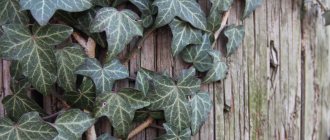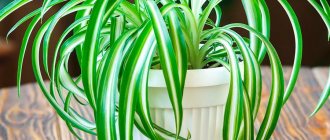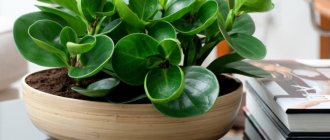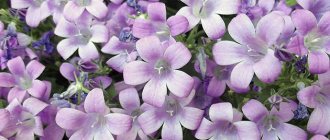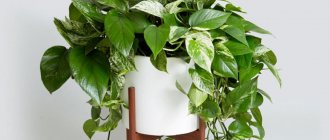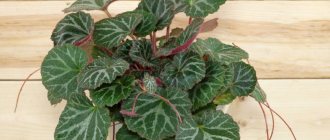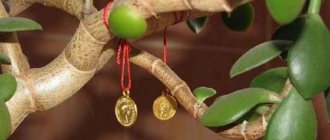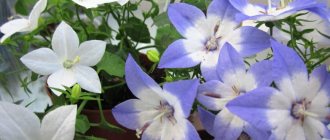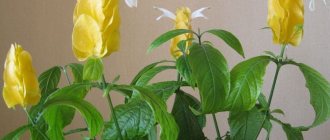Description of the plant
Indoor ivy (Hedera) is a creeping, evergreen, perennial plant of the Northern Hemisphere from the Araliaceae family. The name Hedera was assigned to the plant in Ancient Rome and was transferred without change by Carl Linnaeus to botanical dictionaries.
In nature, there are about 15 varieties of domestic ivy, almost all of them are cultivated and used in temperate and subtropical countries as garden and indoor plants.
The shape and color of the foliage depend not only on the species, but also on the properties of the branches. So, on one shrub “flowering” and “non-flowering” branches sprout. Flowering branches have leaves in the shape of elongated ovals of pale green color. But those that do not bloom are covered with dark green spatulate leaves.
Outdoor ivy blooms profusely with small flowers collected in clusters. After flowering, a fruit is formed in the form of a small black berry, which contains seeds. Flowering is not typical for indoor ivy.
House ivy has been used in everyday life since ancient times. The ancient Greeks, and later the Romans, associated this plant with the god Bacchus, so they made wreaths and decorations from ivy, calling for love and fun.
Ivy was also used as a medicinal plant in folk medicine. It is believed that tinctures and decoctions from this plant have anti-inflammatory and antibacterial effects. They help with diseases of the genitourinary system, as well as with various types of respiratory diseases.
Science does not confirm these properties of ivy, but studies have shown that the plant is capable of absorbing carbon dioxide, toxins and exhaust in large volumes.
https://youtu.be/https://www.youtube.com/watch?v=sb2WSvJW6lQ
_
Is it worth growing it at home?
Of course, indoor ivy is worth growing at home, because it has many useful properties:
- Hedera has an anti-inflammatory effect, so it helps with various inflammatory infections.
- The fruits are used to reduce blood pressure and improve well-being.
- You can make infusions from the leaves that help treat coughs and joint pain.
- Infusions from the roots help with burns, boils and scabies.
- Hedera is one of the ingredients in the decoction for bladder stone problems.
- In addition, the loach cleanses the air of harmful chemical components (benzene, xylene).
Types, varieties with photos
Canary house ivy / Hedera Canariensis
Mature ivies of this species have bright red stems. The leaves grow up to ten centimeters in length. The foliage color is green, framed by a white border along the edge of the leaf blade.
Common Ivy / English Ivy / Hedera helix
One of the most popular types of home ivy. Used as an ampel plant, or for vertical gardening on supports.
In outdoor conditions it blooms and produces inedible dark lilac berries. The color and shape of the foliage depend on the variety.
Varieties:
- Ivalace;
- Eve;
- Sagittaefolia;
- Harald.
Colchian ivy / Hedera Colchica
This species is characterized by large (25 centimeters) foliage with an unusual texture. The outer part of the leaf plate is perfectly smooth, and the inner part is velvety. Varietal ivies of this species present a varied color palette of foliage and its shape.
Varieties:
- Dentata Variegata;
- Arborescens;
- Sulfur Heart.
Ivy Fatshedera Lise / Hedera Fatshedera
Variegated ivy, the leaves of which combine bright green and white spots spread over the surface of the outer and inner sides of the leaf blade.
Signs
From ancient times to the present time, people associate certain events, objects and phenomena with signs. They did not ignore the common indoor ivy. Any plants living in the house have a certain energy. Ivy is considered a vampire, capable of taking energy from a person. And according to another statement, this plant has the wonderful gift of instilling confidence in the owners of the house in their abilities. Even considering two completely opposite qualities, ivy is definitely a useful houseplant. After all, it also takes away negative energy.
For example, in ancient times the Greeks believed that a woman would remain young and beautiful for many years if she placed a sprig of ivy on her chest. It was believed that a married lady would lose her companion if this plant was in her house.
Home care
Lighting
The plant prefers to grow in partial shade or diffused light. Direct sunlight adversely affects the color of foliage and can cause blotchy burns.
Temperature
Ivy prefers average temperatures in the range of 15-25 degrees Celsius. The plant loves fresh, warm air and tolerates ventilation with a slight draft.
Watering and humidity
Water home ivy with settled water at room temperature. The frequency of watering depends on the air temperature and the rate of drying of the top soil layer in the pot. The plant does not like overflow.
Ivy's lush foliage collects dust and toxins, so it needs to be wiped down with a damp sponge or washed completely in the shower every couple of weeks. Loves home ivy and spraying from a spray bottle.
Priming
Any universal slightly acidic earth mixture is suitable for growing ivy. Additionally, a small amount of peat and river sand can be mixed into the soil. A mandatory requirement for ivy is a good drainage layer. The container for ivy roots should be deep and high, but not wide.
Fertilizers
To feed home ivy, use universal liquid mixtures for deciduous plants. In the warm season, fertilizers are applied intensively once every two weeks. In winter, one feeding per month is enough.
Transfer
The frequency of transplants depends on the age of the plant and, accordingly, the intensity of development of its root system. Ivy trees aged from 1 to 5 years require an increase in “living space” every year.
More mature plants are replanted “on demand” when the roots begin to emerge through the drainage slits.
The roots of ivy, which has celebrated its tenth anniversary, practically stop growing, so there is no need to replant the plant; it is enough to simply update the top layer of the substrate once a year.
The transplantation procedure is carried out using the transshipment method so as not to damage the roots of the plant.
Trimming
The stems of house ivy grow very quickly. To preserve its decorative forms, the plant must be regularly pruned, thinned and pinched. Trimmings can be used to propagate and rejuvenate ivy.
After the pruning procedure, the sections must be treated with crushed charcoal.
Growing
In the middle zone, most species and varieties of ivy are grown only as a houseplant. It is planted in pots in soil that is not too rich in nutrients. Plants tolerate shade, but the color of variegated forms fades in the shade, as well as when there is an excess of nutrients in the soil.
Indoors, the plant should be kept away from direct sunlight.
Natural forms of J. helix and J. colchica can be grown in open ground. The best place is in the shade of deciduous trees. It is useful for leaf litter to remain on ivy plantings - this serves as both winter shelter and a source of nutrients. In the first years it grows slowly, but then forms a dense cover of foliage. In some winters it loses leaves, but is renewed from spare buds.
Propagation of indoor ivy
Cuttings
After pruning the ivy, a lot of material remains that can be used as cuttings for propagation.
For planting, stems 10-15 centimeters long with leaves are suitable. The cuttings are placed in water until the first roots appear. The petioles with roots are placed in a container with damp sand and covered with film. After a couple of months, the cuttings will take root well and can be planted in separate pots.
By shoots
If long and massive shoots were removed during pruning, they can be carefully cut with a blade into several separate parts. These vines are also first placed in water and, after the first signs of roots appear, in damp sand. After 2 months they are planted in good soil, in a personal container.
By layering
Containers with a damp mixture of soil and peat are placed next to the pot with the mother plant. Conveniently located stems are bent from the main ivy and secured in the center of the container with the peat mixture. The place where the stem comes into contact with the ground is sprinkled with earth, watered abundantly and covered with film. After the cuttings have taken root, they can be separated and planted in a separate pot.
Diseases, problems, pests and treatment
Indoor ivy is a disease-resistant and unpretentious plant. However, neglecting the rules of care can lead to loss of decorative appearance - fading of the color of the foliage, its yellowing and falling off; lack of variegated color. Most of these problems are the result of excessive watering or abuse of fertilizers.
Pests rarely target indoor ivy, but gardeners may encounter thrips, aphids, scale insects or spider mites. Ivy will easily tolerate treatment with insecticides, as well as soap solution or garlic tincture. Therefore, ridding the plant of parasites will not be difficult.
